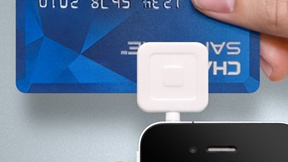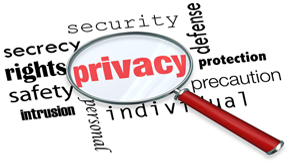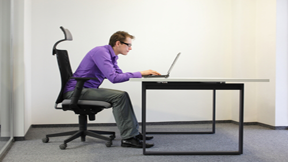|
|
The best point-of-sale apps for your business

Point-of-sale apps can provide a boon to your business. With these apps, you no longer have to be standing in front of your cash register to make a sale. Instead, you can close sales with your smartphone. The tech Web site AppAdvice recently reviewed several of these point-of-sale systems that work with the iPad or iPhone. Interested in making your business more mobile? Check out one of these recommended apps to get started.
Square Register
AppAdvice lists Square Register as its top essential point-of-sale app. This app, created by Square, Inc., is pretty much a hassle-free way to process mobile transactions with your iPhone or iPad. Here’s how it works: When you sign up, Square sends you a credit-card reader. You then download the app — which is free — and sign up for Square’s service. When you close a swipe transaction, you’re charged 2.75 percent of the total sale. If you operate a larger business, you can instead sign up for a $275 monthly rate and forgo the charge-per-swipe.
GoPayment
AppAdvice also had good things to say about GoPayment by Intuit Inc. This app works well for businesses with larger-scale needs, according to the Web site. This comes with some nifty features. First, you can add as many as 50 people to your account. Secondly, you can automatically sync your sales data to QuickBooks, which, after all, is also made by Intuit. This services charges 2.75 percent on card-swipe transactions and 3.75 percent on those transactions that require you to key in customer’s numbers.
PayPal Here
It’s not surprising that PayPal, the leader in online bill paying, would also be a force in the mobile point-of-sale business. AppAdvice says that PayPal Here comes with plenty of features that make it a solid choice for business owners. For one thing, you can allow your customers to pay with a check. And if your customers have their own PayPal accounts, they can close their transaction with you with funds from that account. You’ll be charged a flat fee of 2.7 percent of the sale whenever you use this app to close a transaction.
Top ↑
|
Is privacy in danger thanks to wearable computing?

Google Glass has generated plenty of buzz and headlines. But not all of it has been positive. There are plenty of people worried that Google Glass, and other wearable technology, might actually violate their privacy. And Google isn’t the only company involved in this debate. There’s Memoto, a tiny camera that looks like a pin and that attached to your shirt. This device can snap two photos every minute and then upload them to an online service. Would you feel as if your privacy was violated if you were talking to someone on the street and then, 20 minutes later, a shot of you from that conversation showed up online?
Privacy concerns
The New York Times recently wrote about this issue. The author of the blog piece wrote about how much fun he had while testing Google Glass. But then he also wrote about the more troubling side of the technology. The writer recounts spending time at a party at which he saw several guests wearing Google’s computer-glasses. The writer said that he felt vulnerable staring back into the cameras above these guests’ eyes.
The issue
Glass and other wearable technology is spurring debate because of how the technology works. Wearable technology can often record everything around its wearers. The wearers merely have to blink their eyes or gently click a button, actions that others around them will rarely notice. Critics of this technology aren’t thrilled that the person walking down the street might be able to record them arguing on their cell phones with their significant others.
Deal with it?
Supporters of wearable technology say that critics simply have to deal with changing times. Their attitude is captured best in the New York Times story by a journalism professor how tells the Times, “When you’re in public, you’re in public.” The professor goes on to say that he doesn’t want anyone telling him that he can’t take pictures in public without the permission of others. Who’s right in this debate? That’s debatable. What’s not debatable, though, is that the old definitions of privacy are changing, and they’re doing so quickly.
Top ↑
|
Adding comments to Excel can boost your productivity

Have you ever re-opened one of your Excel spreadsheets only to find that you’ve forgotten what half the formulas in it stand for? Have you ever opened a spreadsheet only to find yourself asking, “What, exactly, was I up to here?” Well, you can prevent this from happening by adding comments directly to the formula cell in a spreadsheet.
Jogging your memory
The tech Web site Lifehacker explains how to do this. You’ll simply have to access Excel’s N() function. To use this function, add a plus sign after your formula. You can then write out your comment in quotes inside the function.
Why do it
Now, whenever you click on that cell, both your formula and your comment will appear. Doing this can save you plenty of time when poring over a half-finished Excel spreadsheet. You won’t have to wrack your brain trying to remember what you were trying to accomplish.
This function is available in Excel 2013 and earlier versions. If you have Excel don’t be shy about using it. You might be surprised at how much more productive you can be.
Top ↑
|
Is single sign-on right for your business?

When your workers log onto their computers, do they automatically, by entering one password and login name, gain access to all of your business’ software systems? Does their single login allow them to access the company’s Intranet, their e-mail systems and your company’s sales data? If so, your company’s software systems operate under a single sign-on system.
Different versions
There are several versions of single sign-on systems. Under a Kerberos-based system, workers must supply their login names and passwords when signing onto their computers. After this, they get a Kerberos ticket that gives them access to email clients, editing software and other systems. This happens because the Kerberos ticket supplies the user’s credentials to each new system that the user tries to access. This prevents workers from having to re-enter their passwords and login names each time.
Benefits
The main benefit of single sign-on is that workers don’t have to constantly enter passwords and logins every time they need to access a new software system. Not only does this prevent password fatigue for your company’s employees, it also saves time. Employees don’t have to stop working to enter their passwords throughout the day. Single sign-on might also save your company IT costs; your IT department won’t be swamped with as many calls from employees struggling to remember their passwords and login names throughout the day.
Cons
Of course, there is some risk to single sign-on. A hacker can gain access to your company’s software systems more easily if you rely on single sign-on. This is why it’s important for your company to tie single sign-on to authentication methods such as smart cards or one-time password tokens. As with all forms of electronic security, then, single sign-on isn’t perfect. You’ll have to take a close look at your company to determine whether this system is right for your business and your employees.
Top ↑
|
The benefits of sitting up straight

How much time do you spend in front of a computer each day? Eight hours? 10 hours? 12 hours or more? If so, you might be doing damage to your back. You can feel it on those rare moments in which you actually step away from your computer. Your back feels stiff. Sharp pains course through it. And standing up straight? It’s like you’re stretching out a rusted, twisted spring. You can take comfort in the fact that you’re not alone. As more jobs require us to sit in front of screens, more of us are suffering from backaches. Fortunately, there are steps you can take to improve your sitting posture and reduce the amount of back pain you are suffering.
Too much sitting
The Wall Street Journal recently ran a story taking a closer look at the damage so many of us are doing to our backs simply by slouching for too long in front of computer screens. The story quotes the medical director for the Center for Lifestyle Medicine at Cleveland Clinic’s Wellness Institute. He says that the main problem isn’t how we’re sitting but how long we’re doing it. As he tells the Journal, sitting for long periods of time can cause lower back pain, high cholesterol, diabetes and obesity. And this is a problem that is only getting worse. The average worker sits for much longer periods of time today. These workers also tend to get less exercise. The takeaway? No matter how you sit, if you do it all day long — week after week, month after month — it’s not good for you or your back.
Perfect posture
That being said, there are better ways to sit than others. The Wall Street Journal story recommends that you always sit relaxed and straight. This will help you breath more efficiently. It also gives you more energy and focus. To get to this type of position, you’ll need to sit away from your chair with your feet planted firmly on the ground. This will also prevent you from slumping forward or backward as you work. If you slump too long for too many days, you could change your body’s entire skeleton, the doctor told the Wall Street Journal. And when you slump, you’re more likely to acquire an attitude of depression and low motivation, the doctor said. The doctor also said that workers should immediately stand up and stretch if they feel tightness or pain in their backs.
Posture guru
Some workers take their posture more seriously than do others. The New York Times recently ran a feature on Esther Gokhale. She’s known as the posture guru of Silicon Valley, and, as this title suggests, she spends much of her time teaching today’s workers how to sit properly. She told the Times that too many people today suffer from pain and dysfunction because they’ve forgotten how to use their bodies properly. Gokhale teaches her clients how to sit in the “primal posture”, a way of holding themselves that mimics the way older babies and toddlers do it. According to the Times story, Gokhale’s low-tech approach to minimizing back pain has gained a following among the most high-tech of clients. Some of Gokhale’s clients include the CEOs, board members and executives at some of the biggest tech companies in Silicon Valley. Of course, you don’t really need an expert to tell you to sit straighter, keep your feet on the floor and, most importantly, leave your chair once in a while. The secret to a healthy back entails staying active. And you aren’t active if you’re sitting and staring at a screen 12 hours a day.
Top ↑
|
|






Leave a Reply
Want to join the discussion?Feel free to contribute!